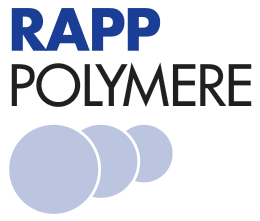€ 214,00*
112000-6.1G
Product information
PEG bis-aldehydes are used for crosslinking amino substrates. They react with free amines, peptides and proteins forming a hydrolytically unstable imine bond, which can be reduced afterwards or insitu by hydrides to form a stable secondary amine bond. With hydrazide substrates, hydrolyzable hydrazone bonds are formed. Therefore reversible pegylation is possible. Reaction with alkoxyamines forms stable oxime bonds.
Literature
L 80 α,ω-Bis-Formyl PEGs (PEG Dialdehydes)
- Luo, Y.; Kirker, K. R.; Prestwich, G. D. Cross-Linked Hyaluronic Acid Hydrogel Films: New Biomaterials for Drug Delivery. J. Control. Release 2000, 69 (1), 169-184. doi: 10.1016/s0168-3659(00)00300-x
- Mahendran, K. R.; Niitsu, A.; Kong, L.; Thomson, A. R.; Sessions, R. B.; Woolfson, D. N.; Bayley, H. A Monodisperse Transmembrane α-Helical Peptide Barrel. Nat. Chem. 2017, 9 (5), 411-419. doi: 10.1038/nchem.2647.
- Kirker, K. R.; Luo, Y.; Nielson, J. H.; Shelby, J.; Prestwich, G. D. Glycosaminoglycan Hydrogel Films as Bio-Interactive Dressings for Wound Healing. Biomaterials 2002, 23 (17), 3661-3671. doi: 10.1016/s0142-9612(02)00100-x
- Grinstaff, M. W. Designing Hydrogel Adhesives for Corneal Wound Repair. Biomaterials 2007, 28 (35), 5205-5214. doi: 10.1016/j.biomaterials.2007.08.041
- Wathier, M.; Jung, P. J.; Carnahan, M. A.; Kim, T.; Grinstaff, M. W. Dendritic Macromers as in Situ Polymerizing Biomaterials for Securing Cataract Incisions. J. Am. Chem. Soc. 2004, 126 (40), 12744-12745. doi: 10.1021/ja045870l
- Liu, Y.; Lee, J.; Mansfield, K. M.; Ko, J. H.; Sallam, S.; Wesdemiotis, C.; Maynard, H. D. Trehalose Glycopolymer Enhances Both Solution Stability and Pharmacokinetics of a Therapeutic Protein. Bioconjug. Chem. 2017, 28 (3), 836-845. doi: 10.1021/acs.bioconjchem.6b00659
- Oelker, A. M.; Berlin, J. A.; Wathier, M.; Grinstaff, M. W. Synthesis and Characterization of Dendron Cross-Linked PEG Hydrogels as Corneal Adhesives. Biomacromolecules 2011, 12 (5), 1658-1665. doi: 10.1021/bm200039s

